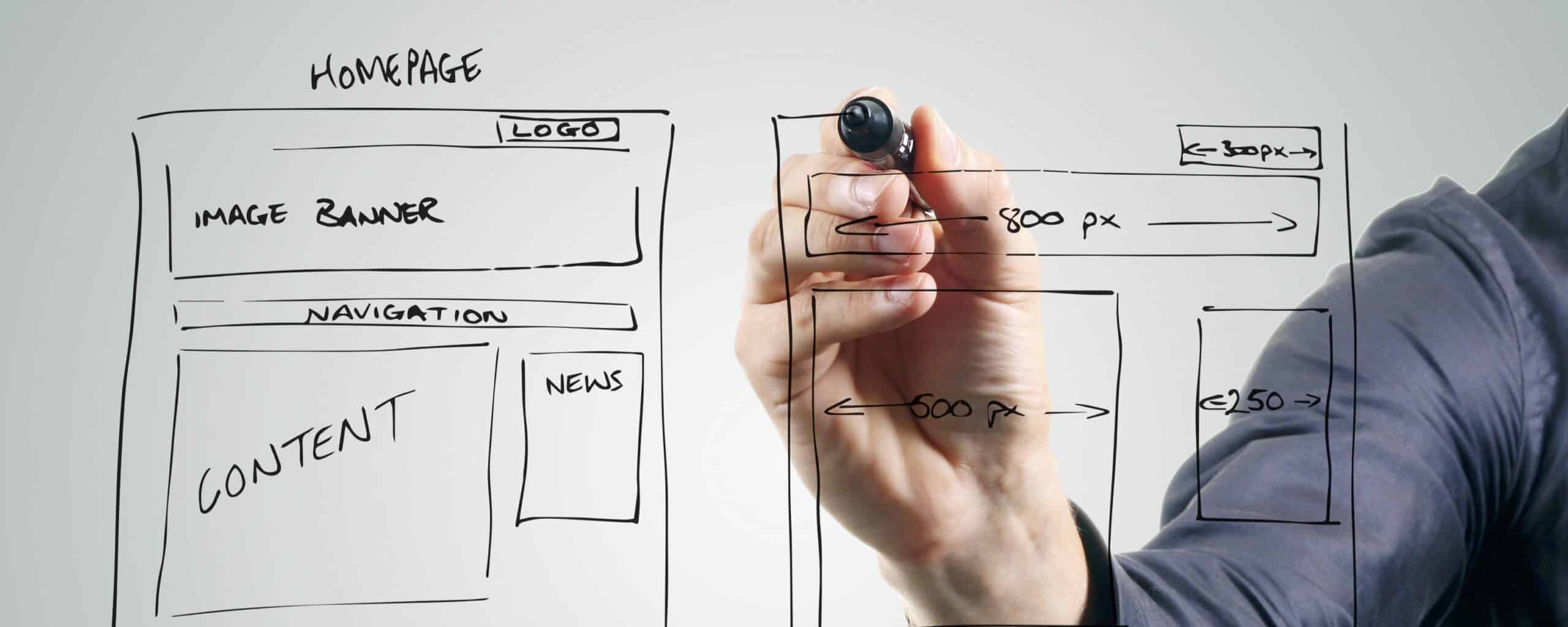An effective SaaS website can be game-changing for a growing company.
Your website is often your first impression on prospective customers, investors and partners. It’s an opportunity for you to tell your story: who you are, how you can help your customers and why you’re the best pick for the job.
It’s also an important business tool. Nearly 75% of internet users judge a company’s credibility on their website’s presentation. And people are making those judgments quickly — like really quickly. It takes about 50 milliseconds (aka 0.05 seconds) for users to form an opinion on your website.
That’s why following SaaS website best practices is so crucial when creating a site for your business.
The SaaS world is notoriously competitive. Your customers often have options. Plus, if they’re going to entrust you with their software needs, they’ll first need to see you’re capable of developing a user-friendly website.
So what’s the best way to make a first impression in this high-stakes game?
At York IE, it’s a question my team helps clients answer every single day. We’re equipped to help growing tech and SaaS companies develop highly effective websites. That includes everything: compelling copy, eye-popping designs and sleek functionality.
Let’s explore seven SaaS website best practices that we follow with our clients:
How Do I Make a Good SaaS Website?
To make a good SaaS website, follow these seven best practices:
- Map out your preferences before building.
- Focus on high-priority pages.
- Answer prospects’ questions before they ask them.
- Write clear, concise copy.
- Include CTAs above the fold.
- Ensure your website is user-friendly.
- Optimize high-value pages for SEO.
1. Map out your preferences before building.
You wouldn’t start driving without turning on your GPS. You also wouldn’t pack for a trip without an itinerary. Pick your favorite cliché; it likely applies to building a SaaS website.
Before you start building, it’s important to map out your expectations for the site as a whole. Put yourself into the user’s shoes: What’s most important to them? How can you lead them on an engaging journey through your site?
You can build a website from scratch, or use a templated website from a service such as WordPress to speed up the process. You’ll have to decide on your color scheme, top-level navigation preferences and all necessary integrations.
We always suggest studying some of your favorite websites (competitors, comparators, aspirational companies). What specific elements or functionality do you want to emulate?
2. Focus on high-priority pages.
We recommend focusing on a few page types as you build the foundation for your website:
Homepage
In many ways, the homepage is the “first impression of your first impression.” Make it count!
The first words that appear on the page — also known as the H1 — should provide a clear value prop on the value you bring to your target audience. Include success metrics and customer testimonials high up on the page. A single, strong hero image (ideally a screenshot/animation/video of your product) will help the reader visualize working with you.
Include clear calls to action for visitors (“Try a Demo,” “Contact Us,” “Download Now,” etc.). More on that further down!
Product Page(s)
This can be one or several pages, depending on how many products you have. If you are selling more than one product, consider a product overview page, with subpages for each product.
Include videos, screenshots and other visuals that show off your product as much as possible. Let the power of your product do the talking! Be sure to highlight the features of your product, with a focus on how they benefit your customers. If you have them, quotes and testimonials from customers provide vital social proof.
Pricing
Many subscription-based businesses (i.e., many SaaS companies) create a dedicated page for pricing options for their product tiers, whether that is based on users, usage or product features. You can also add pricing to your product pages.
Resources
A Resources section allows you to showcase industry expertise, thought leadership and more. It’s also a great way to build domain authority, which means your website is viewed by search engines as relevant and credible. Your landing pages help establish domain authority on critical topics, but your blogs can help you test new keyword pillars and learn about what search behaviors are driving relevant visitors to your site. This will help inform which topics are worth building richer content around.
It’s important to keep this up to date with new content at least a few times a month. Having a consistent blog is great to start, but as you expand, consider diversifying your content to ensure your audiences can consume it the way they want to. A Resources page can eventually house your eBooks, one-pagers, webinars, etc.
About Us
At baseline, you should have an About Us page that gives an overview of your company, your mission/history and your leadership. (Building a messaging hierarchy can be a great first step in this process).
Many early-stage companies also use their About Us to link to key news and awards. Once you have a healthy cadence of press releases, we recommend creating a dedicated press release section for prospects and investors to check out.
Have fun with your About Us page! Do you have core company values? A mascot? A rallying cry? All great things to add to your About Us page to give your company personality!
SEO Pillar Pages
Search engine optimization (SEO) helps get more new visitors to your site. Building SEO pillar pages is one way to drive your strategy.
Websites should be approached like a garden; instead of plants, you’re strategically nurturing your ICP. To grow your digital reach in the right direction, you must develop content that is a.) informative for visitors and b.) targets valuable keywords to help build domain authority.
SEO pillar pages concentrate on important use cases or technology keywords. They delve into specific topics to provide valuable information about those keywords and to showcase how your platform adds value in that context.
Supporting top-to-bottom funnel content, SEO pillar pages are highly valuable pages for visitors and search engines as they facilitate awareness, evaluation and conversion.
Comprehensive SEO keyword research can help identify relevant terms and topics that resonate with the target audience.

3. Answer prospects’ questions before they ask them.
A compelling website will anticipate the questions that arise from its visitors. Prospects should be able to answer these questions quickly when visiting your website:
- What do you do?
- Who do you do it for?
- How does the product work?
- How can I learn more?
4. Write clear, concise copy.
This tip could easily be called, “Don’t feel the need to cram everything onto one page.”
When it comes to copy, less is often more. People only spend 54 seconds on a webpage on average. Focus on the most important things they should absorb in that short time.
Instead of saying, “We use machine learning to help automotive companies reduce their marketing costs,” try something a little more concise.
“Reduce automotive marketing costs with ML,” says the same thing in half the words — and it’s written in a way that inspires action for the reader.
Also, be sure to use white space effectively. Customers won’t be able to focus if text and images are flooding their screens.
5. Be intentional with your CTAs.
Your website should educate visitors on what you do. It should also inspire them to take action.
Decide what that action is: Request a Demo, Try Now, Contact Us, etc. Then try to get the site visitors to oblige as quickly as possible.
Include CTAs above the fold (top of the website) as much as possible, including in your header. On the footer, you can include links to your social media profiles, along with a CTA for visitors to sign up for your newsletter (if you have one).
6. Ensure your website is user-friendly.
Website user experience (UX) makes or breaks first impressions. Develop your website with UX in mind.
Whether you’re using a template or building from scratch, focus on responsive design. Your website should respond to the user’s behavior, and run smoothly no matter how they’re accessing your site. Remember that 60% of online traffic comes from mobile devices; your website should be optimized for both desktop and mobile usage.
Brands should also be thinking about accessibility. Ensuring ADA compliance in web content provides equal access to information for people with disabilities, fostering inclusivity and accessibility.
7. Optimize high-value pages for SEO.
A tool such as Moz can help you find high-value SEO keywords that your audience is searching for. Ensure those words are thoughtfully sprinkled throughout your website copy — early and often — to achieve a higher ranking in search results.
Here are a few additional technical SEO best practices:
- H1/title tags should only be between 50-70 characters in length. Only include one H1 tag for each webpage.
- Meta descriptions should be 160 characters or less.
- Shorter URLs are better! Your website hierarchy should be reflected in your URL parameters. Use the exact keyword phrase, if possible.
- H2/subheads should contain targeted keyword phrases.
Creating a Website for Your Business with York IE
Following these SaaS website best practices will send you on your way to a website that educates, entertains and inspires your site visitors.
If this all seems overwhelming: Fear not! York IE helps growing SaaS and tech brands build effective websites — at a price that fits the budgets of high-growth companies.
Chat with our team today to learn how we can turn your website into an engine for conversion and business growth.



